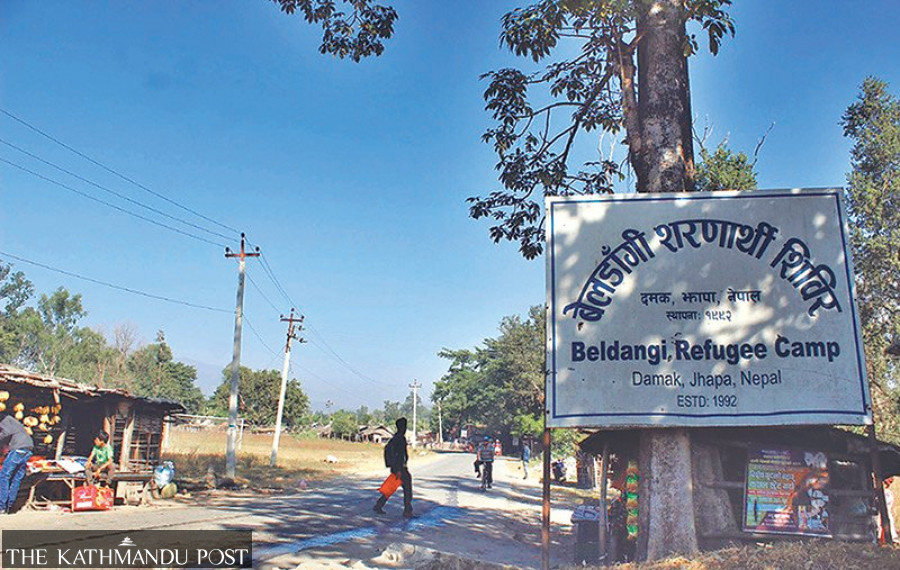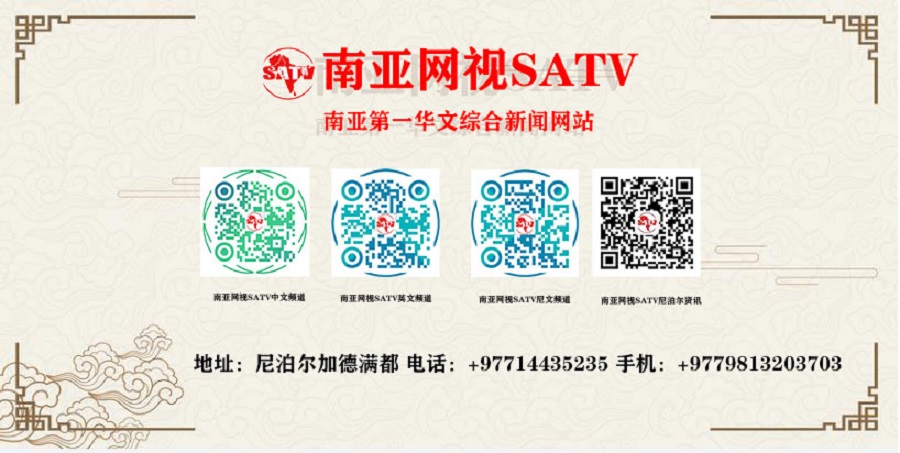
The government is preparing to distribute identification cards to refugees living in Nepal.
Officials confirmed the plan to distribute refugee identification cards but they said it’s the Bhutanese refugees who will be getting the identification documents.
There are no such plans for the registration and distribution of refugee cards to the Tibetan refugees at present, according to officials.
The process of registering and providing refugee identification cards to the Tibetan refugees was stopped in 1995.
Once implemented, the kin of the Bhutanese refugees and some late comers who do not have the refugee identification cards, whose number stands at around 429, will get the refugee cards. The identification will pave the way for them to pursue higher education, open bank accounts, conduct business and do other necessary work as long as they live in Nepal.
After the completion of the third-country settlement of Bhutanese refugees in 2016-17—a total of 113,500 individuals were resettled in the United States, Canada and other countries, the United Nations High Commission for Refugees and other humanitarian agencies, including the World Food Programme, stopped providing food and direct cash support to the refugees who remained in Nepal.
Around 6,365 Bhutanese refugees are still living in Nepal in two camps at Beldangi and Sanischare of Jhapa district, according to the UN refugee agency. Currently, the Nepal government is looking after them.
In the last joint verification in 2019, besides the kin of the Bhutanese refugees, as many as 429 new refugees were found not registered as refugees.
Nepal has always faced diplomatic and internal challenges while dealing with refugees from Bhutan and Tibet. The population of Tibetan refugees in Nepal stands at 12,540.
The Ministry of Home Affairs has sent a proposal to the Cabinet regarding providing identification to Bhutanese refugees.
Home Secretary Tek Narayan Pandey told the Post that after preparing a guideline, the ministry has sent a proposal to the Cabinet for endorsement. Once endorsed, the way will be clear for resuming the distribution of refugee identification cards among Bhutanese refugees.
Pandey said no decision has been taken on issuing refugee cards to Tibetans living in Nepal.
Since Nepal is not party to the Convention Relating to the Status of Refugees, the country is hosting the Bhutanese and Tibetans as well as some urban refugees whose number stands at some hundreds on humanitarian grounds, according to officials from several government agencies.
“But due to our own obligations and duties, we are providing them with facilities and protection,” one of the government officials told the Post. “Yes, there are concerns and pressure from the United States and some Western countries on Nepal to issue refugee identification cards to the Tibetan refugees living in Nepal.”
In an interview earlier this year with Radio Free Asia, a United States government-funded radio news service, a State Department spokesperson called on the government of Nepal to provide refugee identification cards to Tibetan refugees.
“We urge the Government of Nepal to register and document all Tibetan refugees and ensure timely implementation of Nepal’s planned registration and verification process of both the registered and unregistered long-staying refugee population,” the State Department told the news service. “Legal identity documentation for refugees should grant the right to work, own businesses, and ensure equal access to public education, health, social protection and livelihoods.”
According to government estimates, over 4,000 kin and children of Tibetan refugees are still looking for refugee cards so that they could pursue higher education, open bank accounts, find employment, do businesses and access basic services.
Refugees from Tibet started arriving in Nepal after the 1959 failed Tibet uprising. The Nepal government stopped providing refugee cards to Tibetan refugees in 1994. Since 1995, there has been no documentation of Tibetan refugees despite repeated calls from the rights bodies.
“The proposed guideline only works for Bhutanese refugees. Several hundreds of their children are facing various problems while living in Nepal,” said Pandey. “After the proposal is approved by the Cabinet, we will collect data on Bhutanese refugees for distribution of refugee cards.”
Some officials said if refugee cards are provided to Bhutanese refugees who are not registered yet and children of those who have been here since 1990, there will be pressure on the government to issue similar cards to the Tibetan refugees and their children.
But there are political sensitivities attached. Nepal and China established diplomatic relations in 1955 and Kathmandu adheres to “one-China policy” and has always reiterated that it won’t allow any anti-China activity on Nepali soil. Kathmandu keeps a close watch on Tibetan refugees.
“Since we know the geopolitical sensitivity of this issue, we have not decided to issue refugee cards to the children of Tibetan refugees and those who were left out of registration since 1995,” said a Home Ministry official who requested anonymity citing the seriousness of the matter.
Over the last two-three months, senior government officials have held a series of discussions at the chamber of Chief Secretary Shanker Das Bairagai to figure out ways to resolve the complexities regarding the provision of identification for Bhutanese refugees without courting any controversy.
Some secretaries and heads of security agencies had urged the chief secretary to provide travel documents to the Tibetan refugees whose relatives are living abroad to facilitate family reunion, according to an official who participated in the discussions.
The government of the United States time and again has communicated to the government of Nepal that it was ready to take around 1,500 Tibetan refugees to help them meet with their relatives in the US, according to a senior security official.
“But due to the government’s indecision, we have not been able to issue travel documents to them,” the official told the Post. “If this new proposal on distributing identity cards to Bhutanese refugees gets endorsed, a process to distribute travel documents and cards to Tibetan refugees could also start.”
The official, however, said they have not been able to find the copy of the decision that stopped issuing refugee cards and travel documents to Tibetan refugees.
“We are sifting through our archives to find out how and why the decision to stop issuing cards to Tibetan refugees was taken,” said the official.
Refugees from both Bhutan and Tibet could travel abroad to meet their relatives once the refugee cards and travel documents are issued to them.
“If the Cabinet decides to provide travel documents to the interested Tibetans to visit their family members, we hope that Western countries will cooperate, and as per our estimate up to 1,500 such refugees could leave the country,” said the senior security official.
Home Ministry spokesperson Phanindra Mani Pokhrel said they are awaiting the Cabinet decision.
The Jhapa district administration has already covered the health insurance of Bhutanese refugees living in the two camps who have the cards.
Since the third-country resettlement has stopped and the chances of the remaining refugees returning to Bhutan are slim, there are also talks about their local assimilation in Nepal.
“The government, however, has not considered local assimilation. The priority is their repatriation or third-country settlement,” another Home Ministry official said.
Human rights groups say the government’s decision to provide refugee cards to the Bhutanese refugees is a welcome move.
“Providing refugee identification cards has been in discussion for quite a while,” Gopal Krishna Siwakoti, chairman of INHURED International, a Kathmandu-based human rights organisation, told the Post. “If it’s going to happen, this is a good decision. Since Nepal bears the burden of Bhutanese refugees after their third-country resettlement ended, the government has to look for options to manage them.”
According to Siwakoti, the refugee cards will ensure the rights of the refugees to work and own business so that they can self-sustain while they are in Nepal.
Since the government has not shared any information and held consultations regarding the latest development with the human rights community, they are not sure whether the Tibetan and urban refugees will also obtain refugee identity cards.
“I still doubt Tibetan refugees will receive the cards but during my interaction with the leaders of that community recently, I found them very hopeful,” said Indra Aryal, former president of Human Rights Organisation of Nepal. “A lot of young refugees are facing trouble in the absence of refugee identification cards.”
According to Aryal, mostly those who were born in Nepal after their parents fled Tibet and resided in Nepal are facing various problems due to the lack of identification. “Since the issue is serious and holds geopolitical sensitivities, successive governments have been hesitant to take a decision,” Aryal told the Post.













